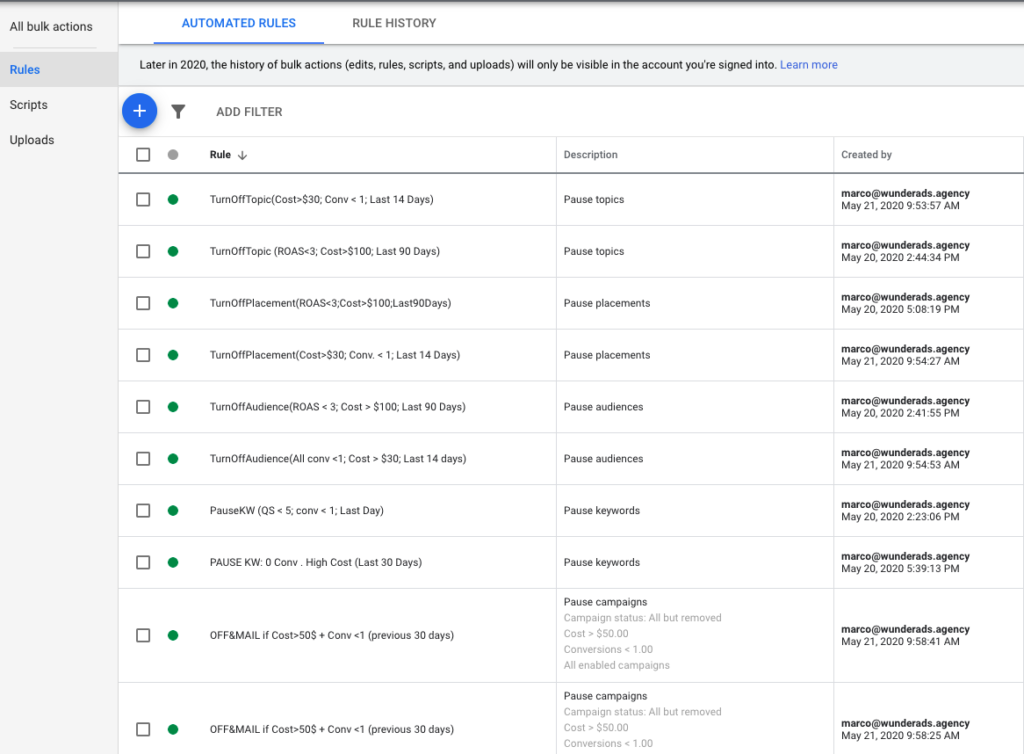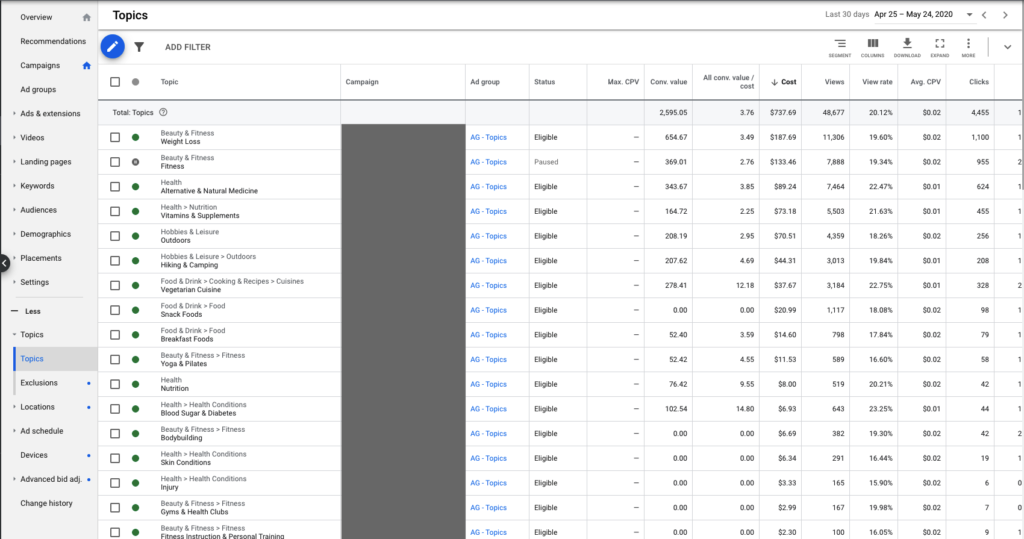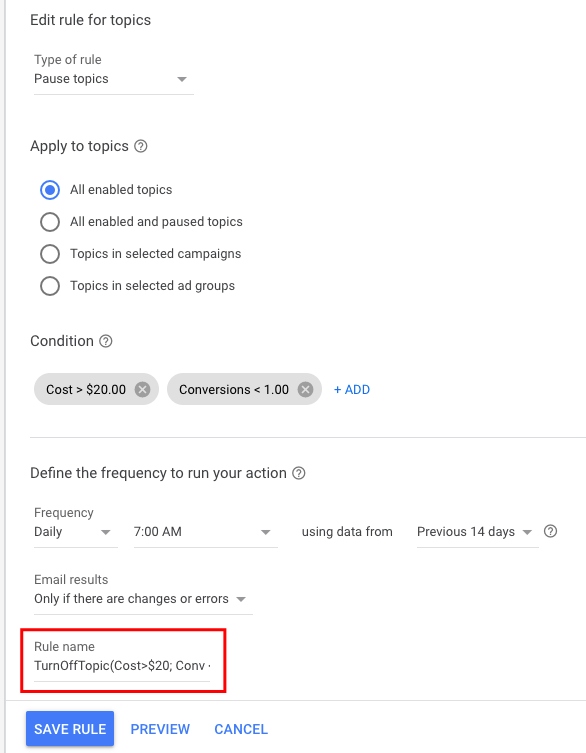Introduction
If you’re an eCommerce owner, there are tons of things to deal with. Depending on your strength are you might don’t want to spend every day analyzing your 10+ ad campaigns to see which campaign should run, which campaign should be paused, or which campaign should be better optimized.
Setting and forgetting a campaign is what would make life easier. However, there’s no 100% automation (yet) with PPC, but there are four partial automation tools that we can utilize within Google Ads.
- Automated Bid Strategies
- Automation Rules
- Scripts (Usually JavaScript)
- APIs (e.g., 3rd party software)
Since No. 3 and 4 might make more effort by hiring a developer or investing in expensive PPC agency management software for scaling large accounts, I pick the first two in this post to show you a few practical examples of how we use them.
Google Ads Automated Bid Strategies
Google is using a machine-learning algorithm that can determine precisely when it can bid higher based on multiple data points.
So here are the automated bid strategies that we are using:
- Enhanced CPC – When we start an account from scratch, and there’s no data inside the account, we pick this one, which is a semi-automated bid strategy option. There are two options 1) increase the bid for conversion 2) or for conversion vale. We usually pick 1).
- Maximize Conversion
- TargetCPA – We use target CPA, for example, once our video campaigns are mature enough and have enough collected conversion for the algorithm to determine which person to play the video ad.
- Target ROAS – This is the bidding strategy that we’re usually aiming for. Once we’re using target ROAS, we can scale the campaign further and allocate more budget to it.
Google Ads Automation Rules
Overview of the automation rules that we set up in one of our client accounts.

Imagine you start a new campaign and set up multiple targeting options (e.g., for a YouTube campaign). Those targeting options could be after keywords, topics, placements, placements, etc. You want to test 20+ different options at once and see which ones are paying you profit.
The Image below shows multiple Topics Targeting options that we test all at once.

Now it depends on how you set up your campaign structure, but can you imagine checking daily every targeting option, whether it is spending too much but not making you back that profit?
With Google Ads Automation Rules, you got a pretty sweet tool that acts like your personal targeting testing assistant. You set up your specific conditions and decide when a targeting option needs to be turned off due to overspending on a low ROI.
Practical Client Example
Our client’s product makes $60 in sales, and for each sale, it profits about $20. Hence, our break-even Return on Ad Spend (ROAS) is 3 or 300%. Since it is a consumable brand and we want new customers into the door, so we’re okay to be break-even with every purchase and spend up to $20 per acquisition. We know that we will get profitable as our customer’s Life Time Value is high enough.
So we came up with three rules for testing:
- Turn off Targeting (in our Example – Topic) if the Cost > $20 AND the Conversion is lower than 1 within the last 14 days:
- Explanation: If we are not making any conversion after spending up to our break-even amount, the automation rule will turn this topic off.

2.Turn off Targeting IF Cost > $20 & ROAS < 3 in the last 14 Days
Explanation: We have the same approach, but rather than just checking whether we have a conversion, we also want to make sure that the data we’ve already collected is actually making us profit or at least break-even. Therefore, we’re adding the condition of ROAS < 3 when checking to turn off the Targeting. Note: The metric ROAS is defined in Google Ads as Conversion Value/Cost.
3.Turn off the Targeting IF Cost > $20 & ROAS < 3 in the last 30 Days
Explanations: Same as the second rule. Just the timeframe that we’re looking at is longer.
The goal of those three automation rules is that we would rather spend more of our money on other targeting options or allocate it even to some Facebook campaigns instead (that also works vice-versa).
Having those rules set up gives us peace of mind when testing lists of different YouTube videos or channels, keyword options, affinity or in-target audiences, and so on. It helps to scale campaigns easy without the need to check all the targeting options daily so that we can focus our efforts more on strategic questions.
Would you like to hop on a call and discuss your eCommerce marketing with us? Book a call.



